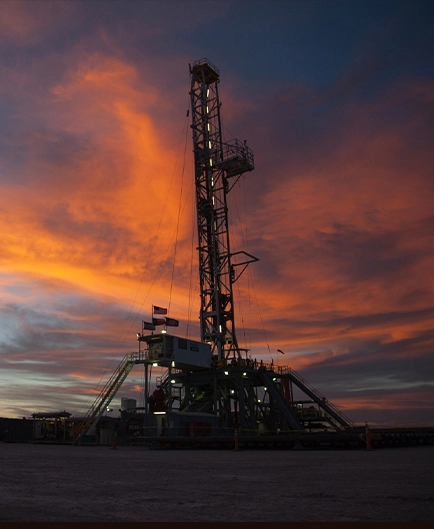- Afrikaans
- Albanian
- Amharic
- Arabic
- Armenian
- Azerbaijani
- Basque
- Belarusian
- Bengali
- Bosnian
- Bulgarian
- Catalan
- Cebuano
- Corsican
- Croatian
- Czech
- Danish
- Dutch
- English
- Esperanto
- Estonian
- Finnish
- French
- Frisian
- Galician
- Georgian
- German
- Greek
- Gujarati
- Haitian Creole
- hausa
- hawaiian
- Hebrew
- Hindi
- Miao
- Hungarian
- Icelandic
- igbo
- Indonesian
- irish
- Italian
- Japanese
- Javanese
- Kannada
- kazakh
- Khmer
- Rwandese
- Korean
- Kurdish
- Kyrgyz
- Lao
- Latin
- Latvian
- Lithuanian
- Luxembourgish
- Macedonian
- Malgashi
- Malay
- Malayalam
- Maltese
- Maori
- Marathi
- Mongolian
- Myanmar
- Nepali
- Norwegian
- Norwegian
- Occitan
- Pashto
- Persian
- Polish
- Portuguese
- Punjabi
- Romanian
- Russian
- Samoan
- Scottish Gaelic
- Serbian
- Sesotho
- Shona
- Sindhi
- Sinhala
- Slovak
- Slovenian
- Somali
- Spanish
- Sundanese
- Swahili
- Swedish
- Tagalog
- Tajik
- Tamil
- Tatar
- Telugu
- Thai
- Turkish
- Turkmen
- Ukrainian
- Urdu
- Uighur
- Uzbek
- Vietnamese
- Welsh
- Bantu
- Yiddish
- Yoruba
- Zulu
Understanding Well Tubing and Casing in Oil and Gas Operations
Well Tubing and Casing Essential Components of Oil and Gas Exploration
In the oil and gas industry, well tubing and casing are critical components that ensure the successful extraction of hydrocarbons while maintaining safety and environmental integrity. These two elements play distinct yet complementary roles in the drilling and production process, making them fundamental to the operations of both onshore and offshore wells.
What is Casing?
Casing refers to the series of steel pipes that are installed in the drilled borehole to stabilize the wellbore and prevent the surrounding formations from caving in. The primary purpose of casing is to protect both the wellbore and the groundwater aquifers from contamination caused by the produced fluids. Additionally, casing provides a structural support framework for the well, which is essential for maintaining the integrity of the borehole throughout the life of the well.
Casing comes in different sizes and grades, which are selected based on various criteria, including the type of formation being drilled, the depth of the well, and the expected pressure and temperature conditions. The most common types of casing include
1. Surface Casing This is the first string of casing that is installed immediately after drilling the surface section of the well. It typically extends to a depth just below the water table and is crucial for protecting freshwater aquifers.
2. Intermediate Casing Installed after the surface casing, this type extends to a greater depth and is used to provide additional support for the wellbore. It also isolates potential pressure zones from the production zone.
3. Production Casing This casing is set within the productive zone of the well. It is designed to allow for the extraction of hydrocarbons and is typically equipped with perforations to enable fluid flow into the wellbore.
What is Tubing?
Tubing, on the other hand, refers to the smaller diameter pipes that are inserted into the production casing. Its primary purpose is to transport produced fluids (oil, gas, and water) from the reservoir to the surface. Tubing is critical in maintaining the efficiency of production operations and ensuring that the hydrocarbons are brought to the surface with minimal pressure loss.
well tubing and casing

Tubing is usually made from high-strength steel and is often smaller in diameter than casing. Its installation follows the completion of the well after the casing is in place. Key aspects of tubing include
1. Production Efficiency Tubing enhances the flow of oil and gas by allowing for controlled production rates. Operators can manage flow rates effectively using various downhole equipment such as pumps and injection systems.
2. Pressure Regulation Tubing systems are designed to withstand the high pressures encountered in the reservoir. Proper tubing design helps to mitigate unwanted pressure drops, which can impede production.
3. Maintenance and Replacement Unlike casing, which is considered a permanent installation, tubing may require periodic maintenance and replacement due to wear and tear. Operators often monitor the condition of tubing to ensure optimal functionality.
The Importance of Proper Installation
The successful operation of both casing and tubing relies heavily on their proper installation. Misalignment, poor sealing, or inadequate cementing can lead to serious problems, including casing collapse, blowouts, or contamination of groundwater. Therefore, rigorous engineering standards and practices must be followed during the entire well construction process.
In addition, advancements in technology, such as the development of corrosion-resistant alloys and improved cementing techniques, continue to enhance the reliability and longevity of casing and tubing systems. These innovations play a crucial role in ensuring the safety and sustainability of oil and gas operations.
Conclusion
In summary, well tubing and casing are indispensable components in oil and gas exploration and production. Casing provides the structural integrity and protection of the wellbore, while tubing facilitates the effective transportation of hydrocarbons to the surface. As the industry faces increasing regulatory scrutiny and environmental challenges, the importance of these components becomes even more pronounced. By prioritizing proper installation methods and leveraging technological advancements, operators can enhance the safety and efficiency of their drilling operations, ensuring a sustainable future for energy resources.
-
Tubing Pup Joints: Essential Components for Oil and Gas OperationsNewsJul.10,2025
-
Pup Joints: Essential Components for Reliable Drilling OperationsNewsJul.10,2025
-
Pipe Couplings: Connecting Your World EfficientlyNewsJul.10,2025
-
Mastering Oilfield Operations with Quality Tubing and CasingNewsJul.10,2025
-
High-Quality Casing Couplings for Every NeedNewsJul.10,2025
-
Boost Your Drilling Efficiency with Premium Crossover Tools & Seating NipplesNewsJul.10,2025







